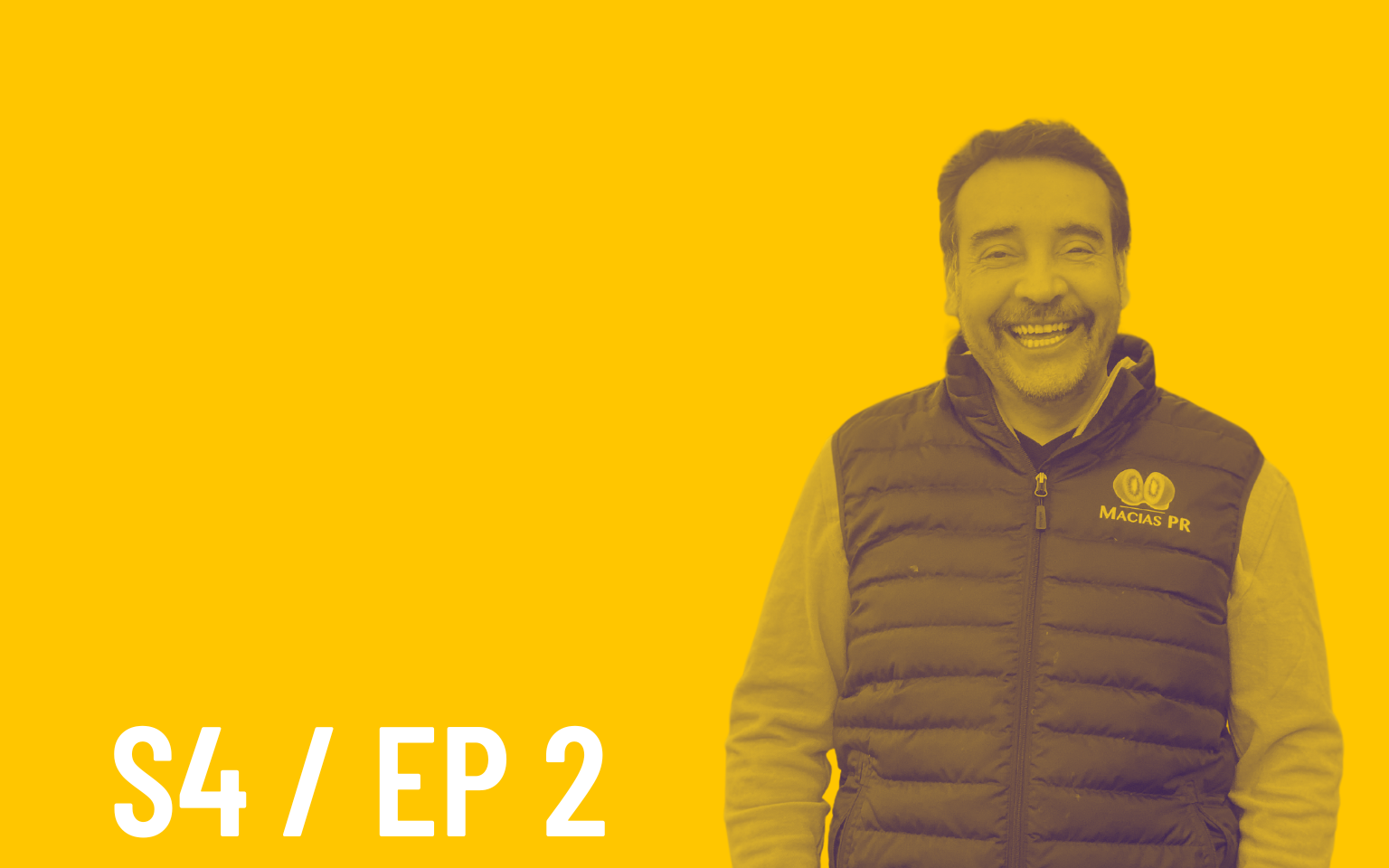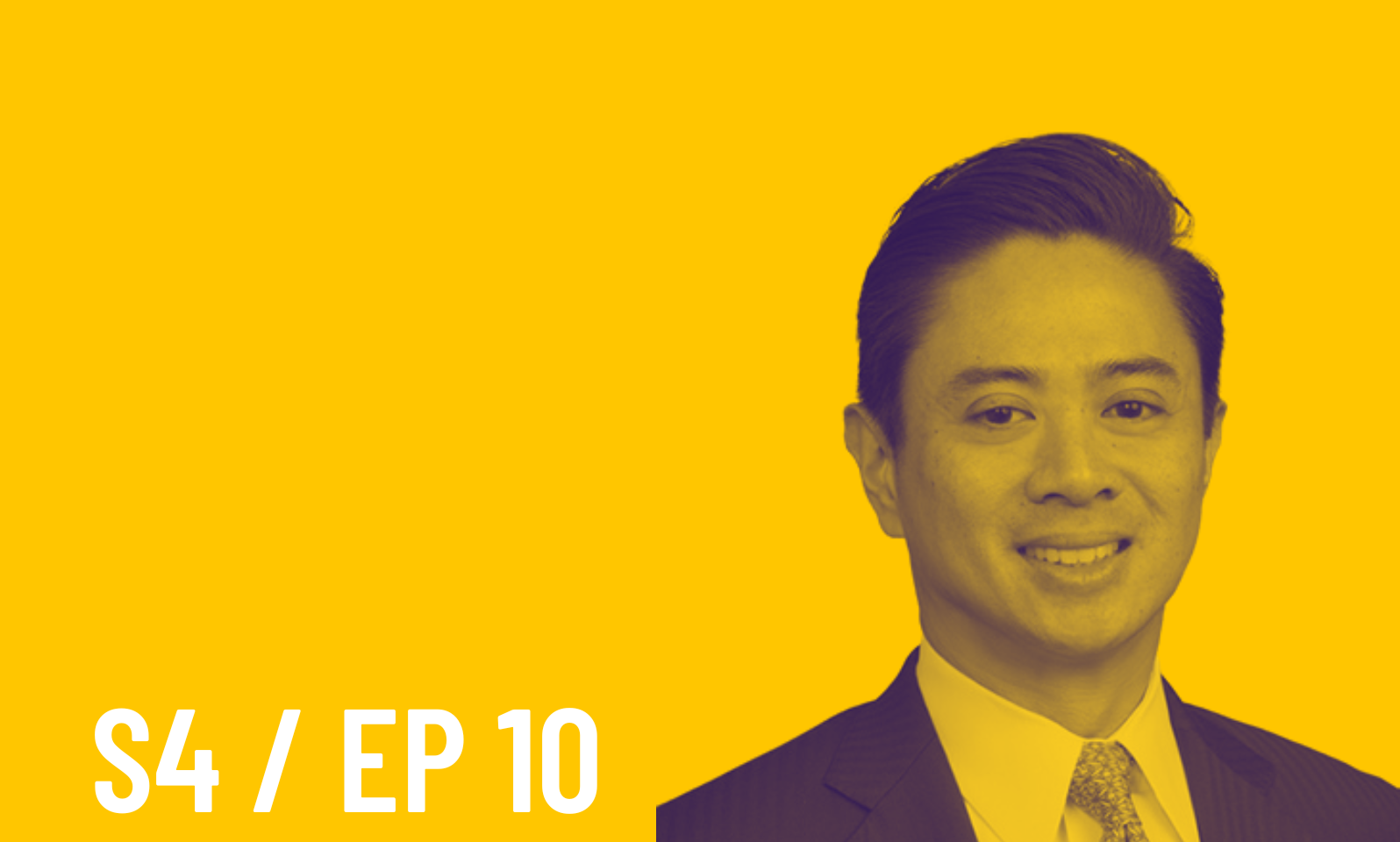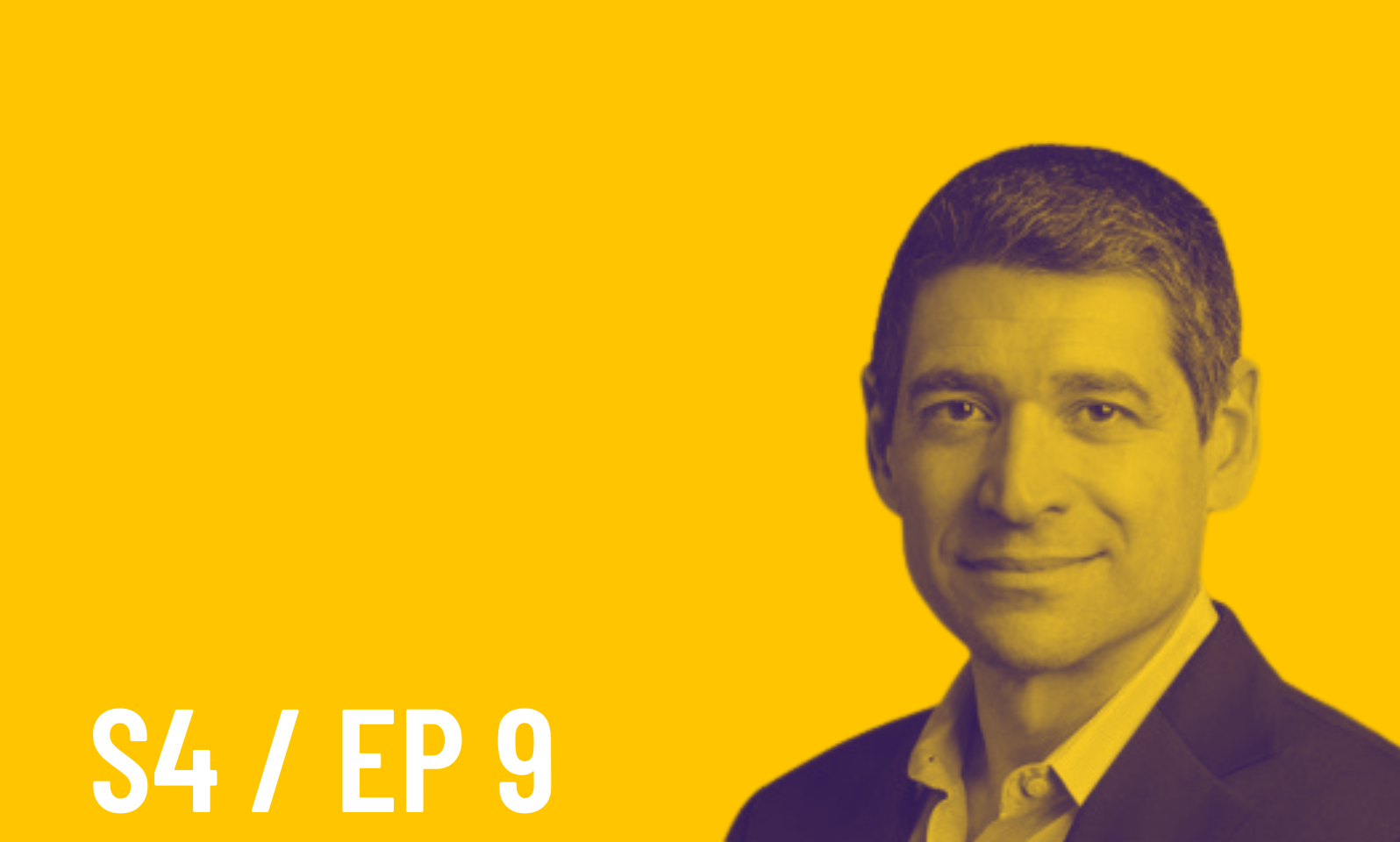Website Best Practices: Messaging, Functionality and Security
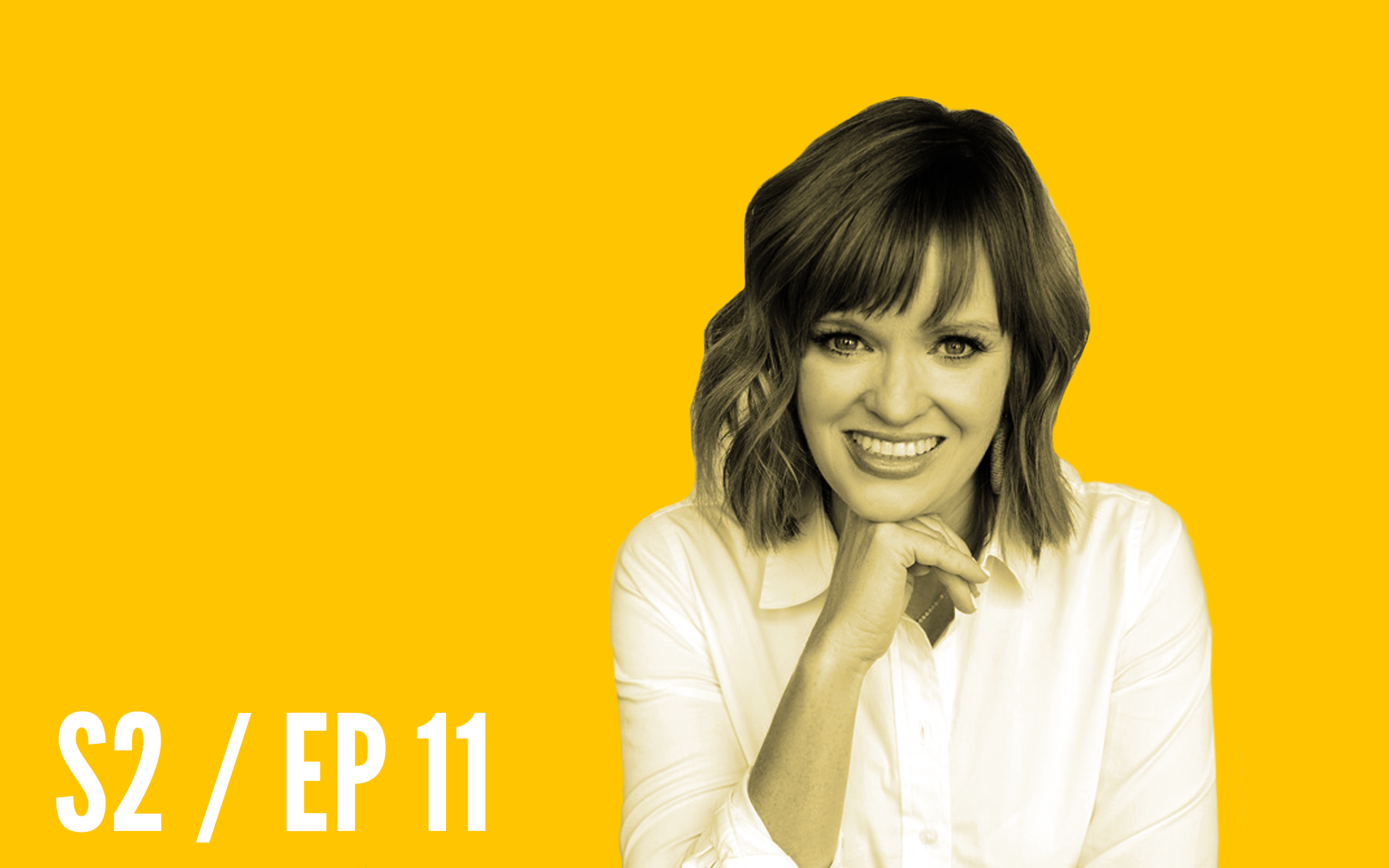
Episode 11, Season 2
Website Best Practices: Messaging, Functionality and Security
- September 6, 2021
- 00:28:05
Listen in as Heather Locke, Chief Support Officer for Hammersmith Support, shares four website best practices critical to success.
Listen on
Episode Description
Heather Locke, Chief Support Officer for Hammersmith Support — a self-described WordPress website development and maintenance shop for small and mid-sized businesses — has over a decade of experience managing, optimizing and developing websites for clients. In this episode, Heather shares her four WordPress website best practices – messaging, calls to action, functionality and security.
In this episode, we discuss:
- What the title “Chief Support Officer” means to Heather and why she chose it
- The benefit of using WordPress over other platforms for small to mid-sized businesses
- Heather’s four website best practices: messaging, calls to action, functionality and security

“Start at the beginning and ask yourself, ‘what is the goal of the site?’ Always keep the end user as your lens and continue to look at the site through that perspective.”
Heather Locke
Chief Support Officer, Hammersmith Support
More From This Episode
Show Notes
Transcript
Recommended Reading
Show Notes
(1:04) Heather explains why she claimed the title “Chief Support Officer” and what it means to her
(2:33) Heather shares who Hammersmith Support is, their focus and why they’re a WordPress shop
(7:37) Heather and Kriste discuss Heather’s four best practices for WordPress websites: messaging, calls to action, functionality and security.
(22:02) Heather explains Hammersmith Support’s website maintenance package
Transcript
[00:00:11.380] – Kriste
Hey, welcome to How It’s Done, a podcast for curious marketers. I’m Kriste Goad, I’ll be your host and I’m really glad you’re here.
[00:00:13.880] – Kriste
Okay. Today we’re talking to Heather Locke, who is the founder and Chief Support Officer of Hammersmith Support, a self-described WordPress website development and maintenance shop for small and mid-sized businesses. Welcome to the show, Heather.
[00:00:29.940] – Heather
Thank you. Thank you for having me.
[00:00:32.050] – Kriste
I appreciate you taking the time. A fellow native Tennessean.
[00:00:36.840] – Heather
Yes.
[00:00:37.820] – Kriste
So today we’re going to talk about website best practices, one of my favorite topics. We’re specifically going to talk about messaging, calls to action, functionality and security. But before we dive into all that, Heather, I really want to talk about your title, Chief Support Officer. I love creativity in titles. Please, please tell us what that title means to you and why you chose it.
[00:01:04.930] – Heather
Well, my business was originally Hammersmith Interactive, and in 2018, I changed the name to Hammersmith Support. I really just felt like we were supporting our clients and that was really our chief job. We were helping them make their website better, we were helping them support their websites, we were holding their hand through technical issues sometimes. And we were developing these close relationships with our clients, and it just felt more like we were a support company and people is kind of what I really wanted to gear my business towards.
[00:01:44.790] – Heather
So I changed the name to Hammersmith Support. I just felt like it was friendlier and more indicative of the kind of agency we were. And with that, I made my title Chief Support Officer. So one of our core values is customer service, and I feel like the title just ties into customer service.
[00:02:07.510] – Kriste
That’s awesome. So tell us a little bit more about your agency. You’ve been in business now a little more than ten years, I think is correct. And you’re in Phoenix and you recently expanded into Nashville. And I would just love it if you would tell us more about Hammersmith Support and your focus and why you’re a WordPress shop – all the good stuff.
[00:02:33.130] – Heather
So Hammersmith Support is a web development agency. We focus on design, development, hosting and maintenance of custom design WordPress websites. We specialize in WordPress, and that’s primarily what we work in. We do from time to time work in Shopify and just some HTML based development programs. But primarily we are WordPress. And I like WordPress so much because it’s an open-source platform and there’s so much code developed for it around the world, so many plugins and add ons that you can really expand it and really build a very robust site with a lot of functionality with really working with any budget because there is so much code available to you.
[00:03:23.940] – Heather
So that’s one thing I really like about it. The other thing is you’re not tied into one host. You can take your files, you can host them yourself. You can host them on another. You can change hosting platforms if you want. They are your files and you’re not locked in. Whereas with one of the service providing websites like Wix or Square, you’re kind of in their system, and you’re somewhat leasing your site. With WordPress, you own it, you have these files, and that’s another thing I really like about it.
[00:03:54.420] – Heather
It’s a very flexible platform, and the way it generates code, it’s very friendly for Google. So that’s why we specialize in WordPress. There’s a lot of platforms out there for developing, but I think it’s a great choice for small to medium size. Even some large businesses use it.
[00:04:11.900] – Kriste
I want to ask you about that, because sometimes we have clients that – we love WordPress, too, as an agency. And when we’re helping clients with sites, we always recommend it, especially as a marketing agency, it makes it so much easier on the back end for marketing purposes and updating purposes. And if you’re doing a lot of content and doing a lot of marketing campaigns, it just makes it a lot easier for us as a marketing partner to, if we need to go in the back end and build those pages or add content and make changes to the site or make changes to the messaging, it’s just so much easier.
[00:04:48.210] – Kriste
But with that said, sometimes and I would say – especially if we’re working with a technology product company and they’re made up of developers and coders – they often are a little leery of WordPress from a security standpoint, or they feel like, “hey, that’s great but we can build it ourselves, and we’ve got developers that can do that,” and then they’ll end up with a platform that ultimately, down the line and probably not even too far down the line, they have to redo. And I’m just curious if you run into that also.
[00:05:29.420] – Kriste
Do you have to do a lot of convincing sometimes with clients, or do you not really run into that? And at what point do you say “okay -” because sometimes you just say, “okay, that’s fine. That’s what you want to do. It is going to be problematic, and it’s going to take your people away from what you need them doing, which is focusing on your product rather than your website.”
[00:05:48.850] – Heather
Yeah, I do run into that. And WordPress can be vulnerable. That is true. With the good, you take the bad, and we have a maintenance plan. We work with our clients to keep it secure, and you can definitely use it and be secure if you put the right protocols in place. And that’s a matter of keeping it updated, updating it consistently, monitoring plugins for any security patches that come up. And it alerts you, it’s not like you have to be scouring the Internet for them. And having backups in place.
[00:06:26.200] – Heather
We’ll get into this, too, when we talk a little bit about security, but I think you can overcome a lot of the security conversation if you have the right protocols put in place from the beginning. Duo authentication, you have a secure host, there’s a lot of ways to overcome that. And I think a lot of times it’s just kind of weighing the marketing team’s needs versus the technical team. And do they want to be supporting this moving forward, or do they want the marketing team to be able to take it and go?
[00:06:54.140] – Heather
And that’s kind of the argument I’ve used when I’ve been in that same situation. “You can do this, but we’re going to need to come to you very frequently as we are evolving and adding new pages. Do you want that, or do you want us to just be able to fly?” And so that’s usually a pretty effective argument.
[00:07:17.160] – Kriste
They’re like, “oh, now that you put it that way…”
[00:07:22.480] – Kriste
Well, listen so based on all your experience and you’re a developer yourself, I believe, is correct.
[00:07:30.790] – Heather
Yes, I am.
[00:07:31.820] – Kriste
Awesome. You can talk the talk and walk the walk.
[00:07:37.570] – Kriste
So based on your experience, you’ve really honed in on these four best practices for your website. So many companies, large and small, I’ve just seen them get their website so wrong, so to get it right you really focus on those four best practices, which I would love for you to walk us through. I’ll just highlight them for the listeners. And then I’m just going to turn it over to you to talk about messaging, call to action, functionality and security.
[00:08:05.080] – Kriste
And why these four? Did you struggle with that a little bit, or was that a pretty easy four to narrow down to?
[00:08:12.260] – Heather
I mean, I think it was pretty easy to narrow down, especially just because they’re pretty all encompassing when you think about it, especially with functionality. But I think there’s just some really key things that really make a difference with these four.
[00:08:29.420] – Kriste
Awesome. Dive in for us. Tell us more.
[00:08:32.900] – Heather
Okay. The first one is messaging. I think a lot of times people are building the site, and when they’re doing it they’re looking through their own lens and not necessarily their users’ lens. And sometimes you’ll go to a site and you’ll have no idea what they do. And where you see this a lot is where it’s more difficult. Like a consulting company that has a really specific niche. It’s hard for them to really articulate exactly what they do in a way that their user might be looking at it.
[00:09:06.640] – Heather
So they go with something really abstract. But your messaging on your site, on your homepage has to be just super clear. The great book by Donald Miller called Building a Story Brand – he’s also a Nashville resident – and,
[00:09:21.870] – Kriste
Everybody quotes him so often.
[00:09:25.720] – Heather
I’m a big fan. He talks about the grunt test, which is if a caveman were to look at your site, could he grunt what you do in 3 seconds or less. And that’s what he’s saying, as far as a barometer of how clear your messaging should be when they come to your site.
[00:09:44.770] – Heather
And I’m also seeing a trend now, well, it’s been for the last year and a half or so, it used to be all about the banner slider, people saying multiple things. And now it’s mainly just one statement, one image on your banner. And the reason for that, well one of the main reasons, is we’ve done so much mobile browsing that our tendency in our instinct is just to scroll down immediately. So you’re not catching people with these multiple slides in a banner. So having your messaging just super clear when someone comes right to your website, I would say is the very first thing you need to do.
[00:10:22.470] – Heather
And then show a friend, show a business colleague and say, when you look at this, do you know what we do? Get an outside perspective to see if it really is communicating because it’s hard when you’re really close to your content.
[00:10:37.960] – Kriste
Yes, it is.
[00:10:39.760] – Heather
See if it passes the grunt test.
[00:10:41.350] – Kriste
That’s something that I mean, we have so many clients, they come to us for messaging and positioning. And when you go through the website development process and you start to translate those messages onto the website, that’s when the rubber meets the road. And it takes a lot longer to get to that crystal clear message than what a lot of people think.
[00:11:04.400] – Heather
Oh, absolutely. There’s definitely an art to it.
[00:11:07.840] – Heather
The second one, I would say, is calls to action. When people come to the site, do they know immediately how to engage with you? And is it clear? What do you want them to do? When you think about your website, what is the conversion you want? Do you want them to just join your newsletter? Do you want them to fill out a contact form? Do you want them to purchase something? Do you want them to schedule a meeting? And whatever that call to action is, make sure it is clear that the copy on it – there’s strong and weak calls to Action. So a weak call to action is a “read more” or “learn more.” Now there’s definitely a time and a place for the read and learn more calls to action, but a strong call action…
[00:11:58.050] – Kriste
I’m sorry to interrupt, and maybe you’ll get to it, but are those more for content, for example? Or maybe you’re doing blog posts or educational thought leadership things, that’s when those are more appropriate?
[00:12:13.400] – Heather
Yeah. Exactly. If you have snippets from three blogs and it’s “read more” or each one, you show the first paragraph and “learn more.” If they’ve read to the bottom of that paragraph then that is a strong call to action because now they want to continue reading. So there’s definitely a time and a place for those. But your main call to action on your pages where you want to drive conversions should be strong, like “book a consultation,” “join our tribe,” “try today.” Anything that I create urgency, is clear, and it can also be somewhat branded.
[00:12:56.400] – Kriste
What do you mean by that?
[00:13:01.620] – Heather
I would say if you could take some of your brand language and use that into a call to action. So like for us, it might be “get support now.”
[00:13:12.750] – Kriste
Got it.
[00:13:13.920] – Heather
Because we have Hammersmith Support in our [name]. But you might use other language in your branding that you could tie into your call to action. “Grow now” for you. “Light it up.”
[00:13:27.950] – Kriste
“Light a fire.”
[00:13:29.760] – Heather
“Light a fire.”
[00:13:31.910] – Kriste
Right. Okay. That’s a great example.
[00:13:35.720] – Heather
So really reviewing your calls to action, especially on your home page, making sure you’re driving people to the action you want them to do and not giving them too many choices, and making those calls to action strong.
[00:13:52.120] – Kriste
Do people give you a lot of push back on those? Do you actually recommend what those should be or do you lean on the clients to do that?
[00:13:59.830] – Heather
Most of the time we work with a writer. Usually we’ll kind of wire frame out the home page based on the content we think should be there. And then we work with a content writer to finalize what the actual wording is. That’s not our specialty.
[00:14:19.860] – Kriste
That’s where you partner with someone like us.
[00:14:22.710] – Heather
That’s exactly right.
[00:14:25.600] – Kriste
Awesome.
[00:14:26.960] – Heather
Then the third one is functionality, and this one is a little bit all encompassing. First off, is your website viewable on all devices? Does it work? If you look at your site on a desktop and an ipad and a mobile phone and you get three different experiences, then that’s probably where you should start. Making sure users can use it from any device, any platform, and the experience for the user stays the same.
[00:14:57.170] – Heather
The next thing I would say under functionality is your navigation. Is your content organized? Can people find what they’re looking for very easily? This sounds so elementary, but you wouldn’t believe how many times it just gets so over complicated.
[00:15:15.200] – Kriste
Why do you think that is?
[00:15:19.500] – Heather
I think mainly people overthink it. And they also want to give every piece of information. And your site is really a sales tool, and it doesn’t need to have the whole dictionary on it. It just needs to have the information they need to go one step further and whatever that means for your sales process.
[00:15:42.840] – Heather
So I think people want to just put all the content on the page instead of really driving to the content that needs to be there. And then they want to make room for other things. And so then they start varying things in the menu. I see that a lot, too. They want to make room for something else, then they bury something under another. After a while of doing that, the navigation gets really convoluted.
[00:16:12.960] – Kriste
I mean, the worst thing is as a user, if you got way deep into a website and you have no idea how to get back where you started. That’s what you never want, right?
[00:16:22.230] – Heather
That happens a lot.
[00:16:24.220] – Kriste
Yes, it does. I mean, I would say, especially for larger companies, and if they have multiple different verticals they play in and a lot of different products. I’ve seen that be an issue. But then even smaller companies or mid size companies, I’ve seen they do that as well.
[00:16:44.790] – Heather
It happens a lot.
[00:16:47.000] – Kriste
What’s the best way that you guard against that when you’re working with a client building a website?
[00:16:53.020] – Heather
Well, I would say you just start at the beginning. Start at the site outline. What is the goal of the site? Go back to the user base, go back to the objective of the site and think about it from that perspective and what those users and audience, what they’re looking for and build around that. Always keep the user, the end user, as your lens. Continue to look at the site through that perspective. So I would say that’s the first piece of advice.
[00:17:27.280] – Heather
And I would say also, what is fluff – what needs to be there versus what doesn’t need to be there? And see what can be eliminated to keep it more streamlined. Maybe it’s a link within a page but it doesn’t have a spot in the main menu. And back to Donald Miller’s book, one of the things he recommends is really keeping the main menu on revenue-focused activities. So if it’s something that doesn’t drive revenue, it doesn’t need to be in the top navigation. In some cases it works. I don’t think that’s a blanket rule, in my opinion.
[00:18:06.820] – Heather
But when you do have a lot, maybe you have a lot of verticals or different product lines, keeping your menu to those and keeping your about us and your FAQ and your blog, those can be very deep down or in your footer links. So I think always just going back to who your audience is and tailoring the content and experience towards them.
[00:18:28.130] – Kriste
That’s awesome. Are there others under functionality that are critical?
[00:18:32.370] – Heather
I would say the other thing is just making it easy to update so that as many things as you can make dynamic with pulling in the latest blog post, making things seem current, and it’s easy to update for the administrators and the users is also really important.
[00:18:54.400] – Heather
And then lastly, but probably should be at the top of the list is speed. So users spend a fraction of a second before they – if it’s slow to load and it takes a few seconds, you probably lost them. And so there’s lots of tools out there to do page speed tests and Google Page Speed is one of them. There’s also lots of plugins available for WordPress that helps speed up the site. The site speed is critical. It also impacts your Google ranking and the score that Google assigns to you based on your site. So speed is another critical component of functionality.
[00:19:42.370] – Kriste
Very important. They say that we have, as humans, an attention span that’s now less than a goldfish. So less than seconds. It’s really important.
[00:19:53.980] – Heather
Are we really progressing the right way? It makes you ask.
[00:19:58.880] – Kriste
It’s got to be no, but.
[00:20:04.990] – Heather
Lastly is security. So we kind of touched on this in the beginning of our conversation. But security is very important with all websites, not just WordPress websites. If your password is password, then you’re not secure. So I would say the first place to start is make sure you have strong passwords to access your site. If you can remember it, it’s not a strong password is kind of a general rule of thumb. And does your site have an SSL certificate? So this is what makes your site say https versus http, and it will have a little lock symbol in the URL bar. Sometimes it’ll be fine on the home page, but it’ll be a broken link somewhere in the page because there’s another asset that’s causing that to break.
[00:21:01.180] – Heather
But that lock needs to be secure on every page of your site. So that’s extremely important for a couple of reasons. It’s a security layer. It also impacts your SEO with Google. And it just helps close some holes that hackers or malware where they can get in. So that’s very important, especially if you have contact forms. And some browsers won’t even show a site that’s not secure. So that is critical.
[00:21:30.480] – Heather
And then doing regular malware scans. So again, there’s lots of tools out there where you can run a scan on your site, but there’s things that maybe aren’t easily seen. So maybe through comments or blog post comments or through form submissions, there’s lots of places. So by doing regular scans, you’ll be alerted of those in advance and be able to tackle it before it becomes a problem.
[00:21:58.720] – Heather
Yeah. So those are my four at a very high level.
[00:22:02.000] – Kriste
Four best practices. I love it. And then also you’re also a maintenance shop as well. And so clients having a maintenance agreement with you, you’re able to make sure that all of those security measures are in place and that things are updated and the client can kind of set it and forget it if they’ve got you on board doing that. Is that accurate?
[00:22:27.740] – Heather
Absolutely. Yeah. Our maintenance package is basically each month we go into the site, we do a full test of the site. We test all major types of pages. So make sure we review a blog page, a service page, whatever type might be there. We test any lead generation that’s in place. If there’s calls to Salesforce or to another marketing auto funnel, we make sure that stays in place. If there’s ecommerce and there hasn’t been a purchase in a while, we test that, make sure that there’s no problems with purchasing.
[00:23:03.760] – Heather
We run a malware scan, we update the plugins and framework, we submit it to Google search console, and then if you have any issues or need anything through the month, we are there for you.
[00:23:16.840] – Kriste
This is so important, and I think it’s something that a lot of people don’t spend a lot of time thinking about, but it is so critical. And I think everybody has run into an issue at some point where I did just yesterday, I was trying to visit a site and it was like a big alert that, hey, this site isn’t secure and it looked like their SSL certificate had just expired, like the day before. That’s not good.
[00:23:45.290] – Heather
That’s not good at all.
[00:23:47.810] – Kriste
But, you know, I think it’s a relatively low cost thing to have someone that knows what they’re doing, keeping your site maintained in that regard. And I just stress with clients all the time if they don’t have someone in-house that’s doing that for them, and that that’s part of their job on a monthly basis, that it is really worth it to have someone in place doing that for you. And it’s really money so well spent.
[00:24:18.500] – Heather
And that goes back to kind of why we changed our name to Hammersmith Support, because we just take care of this and support and also help train our clients along the way on how to do things. So we like that collaborative nature.
[00:24:31.860] – Kriste
That’s awesome. Are there any other things? Are there any, like what to absolutely not do. I think people struggle with finding a good website partner and building a really good website. And I think it is hard for people to understand where to place their bets. Who to go with, because a lot of times you can see folks out there saying they’re website builders and they don’t necessarily come at it with that support mentality and that customer service mentality like you guys do. Any advice for people as they’re choosing website partners?
[00:25:15.970] – Heather
Well, we do have a PDF you can download on our website for tips for hiring a web designer or web developer, so I can provide the link to you for that. That can be in the show notes if you’d like.
[00:25:33.940] – Kriste
Yeah we’ll definitely include that in our show notes and we’ll include some of – I know you have an accompanying slide deck around the four best practices, so we can include that as well and any other resources, feel free to share those, and we’ll be sure to include those in the show notes for people.
[00:25:50.380] – Kriste
So speaking of that, before we wrap up, I would love it if I know people are going to want to learn more, connect with you. Tell people the best ways to do that.
[00:26:01.980] – Heather
Probably the best way is our website, which is HammersmithSupport.Com, just as it sounds, hammer – smith – support. And we have a button right on our homepage, our call to action, for scheduling a consultation. So people can click right there and book a 30 minutes consultation with us directly from our website. And that’s probably the best way. I’m also very active on LinkedIn, which I think is how we had originally met. Heather Locke.
[00:26:33.700] – Kriste
Yeah, thank you for reaching out.
[00:26:38.250] – Heather
And on Instagram and Facebook as Hammersmith Support.
[00:26:42.610] – Kriste
That’s awesome. Well, I really appreciate you taking the time. I know time is our greatest commodity so I really appreciate it. This has been some great tips, and I hope that our listeners gain as much from this as I have gained and just keep up the good fight out there, Heather. And welcome to Nashville also.
[00:27:05.030] – Heather
Thank you. I’m very excited to be here.
[00:27:07.940] – Kriste
Yeah, I look forward to seeing you around Nashville more. I know you spend time in Phoenix and Nashville, but I hope to see you here more.
[00:27:18.890] – Kriste
So that wraps up this episode of How It’s Done. My guest today has been Heather Locke, Founder and Chief Support Officer of Hammersmith Support. Thank you so much, Heather.
[00:27:30.440] – Heather
Thank you, Kriste. It was great being with you.
[00:27:58.460] – Kriste
That’s it for now. Thanks so much for listening. We’re looking forward to keeping great conversations coming your way as we grow this podcast. There’s even more great content from our conversations on our blog. Be sure to check it out at growwithfuoco.com. That’s grow with fuoco – f-u-o-c-o – dot com. Stay tuned until next time and no matter what, stay curious.
Recommended Reading
- People and resources to know:
- Find Kriste on:
Email Kriste: kg@growwithfuoco.com
More From The How It’s Done Podcast
A Diamond in the Rough: How Digging Deep Uncovered a Wall-Street-Journal-Worthy Story about Lab-Grown Diamonds
January 25, 2024
Why is your PR effort not paying off and what’s the importance of having characters in your marketing efforts? Tune in to learn the disconnect …
Read More →
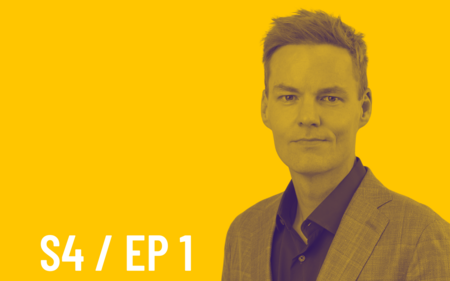
podcast
The Quantum Health Effect: A Behind-the-Scenes Look at Brand Storytelling
January 4, 2024
John Hallock, Chief Communications Officer at Quantum Health, discusses the role CEOs play in PR, what a strategic marketing communications plan should include, and leading …
Read More →
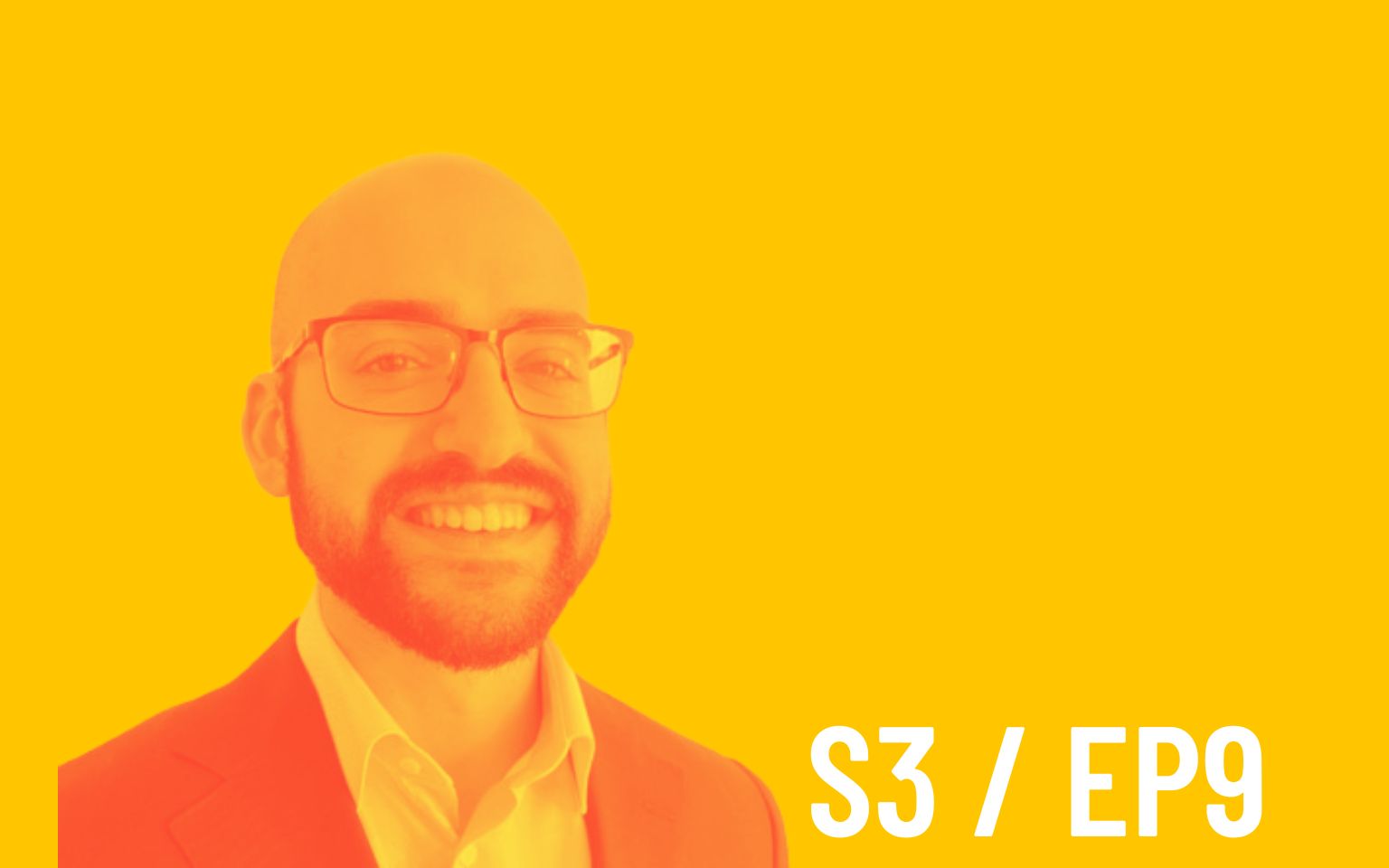
podcast
Why AI is Not Coming for Your Job, the Control Freak Buyer Persona and a Bias for Specialist Agencies
September 20, 2023
Our guest Joe Zappa and host Kriste Goad dive into the measurability of content marketing, AI for marketers, why you should never work with a …
Read More →
Want to be a guest on a future episode?
Share your thoughts directly with our show host, Kriste Goad.

